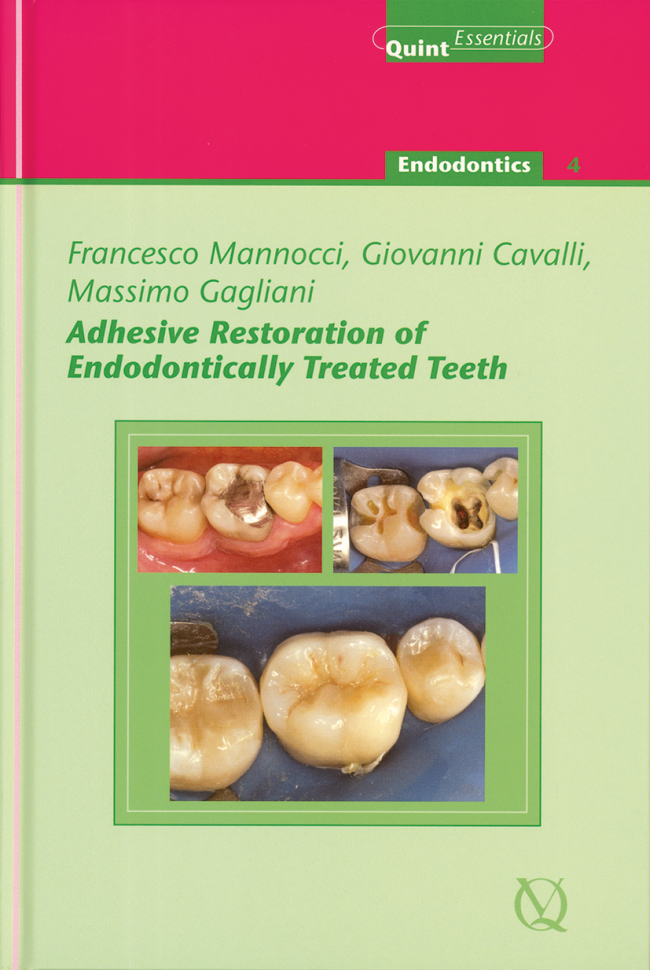International Journal of Computerized Dentistry, 4/2017
PubMed ID (PMID): 29292412Pages 377-392, Language: English, GermanAl-Nuaimi, Nassr / Patel, Shanon / Foschi, Federico / Mannocci, Francesco / Austin, Rupert S.Objectives: To evaluate the in vitro accuracy of digital impressions for three-dimensional (3D) volumetric measurement of residual coronal tooth structure postendodontic cavity preparation, with reference to micro-computed tomography (μCT).
Methods: Quantification of the accuracy and precision of the intraoral digital scanner (3M True Definition Scanner - IOS) was performed using a metrology gauge block and a profilometric calibration model. Thirty-four human extracted molars with endodontic access cavities were scanned using both intraoral scanning (test scanner) in high-resolution mode, and µCT (reference scanner: GE Locus SP μCT scanner) in high- (HiResCT) and low- (LoResCT) resolution modes. Comparisons of volumetric accuracy and 3D profilometric deviations were performed using surface metrology software. One-way repeated measures analysis of variance (ANOVA), in combination with the Bonferroni post hoc test, was implemented to compare the differences in volume measurements between scanning methods.
Results: Digital scanning revealed smaller volume measurements by 1.36% and 0.68% compared to HiResCT and LoResCT, respectively. There was a statistically significant difference in the volumetric measurements obtained from the IOS scanner and both HiResCT and LoResCT scans (P 0.001). Analysis of the mean 3D profilometric deviations revealed that the IOS displayed greater surface deviation (± 27/33 μm) vs HiResCT and LoResCT (± 16/32 μm).
Conclusions: Although volumetric measurements of endodontically accessed teeth were up to 1.36% smaller in comparison to µCT, the digital scanner was able to reliably measure the extra- and intracoronal aspect of the endodontically accessed tooth.
Keywords: intraoral scanner, micro-computed tomography, endodontic cavity preparation, residual coronal tooth structure, volumetric, metrology
Quintessence International, 1/2017
DOI: 10.3290/j.qi.a37131, PubMed ID (PMID): 27834417Pages 69-82, Language: EnglishCorbella, Stefano / Taschieri, Silvio / Mannocci, Francesco / Rosen, Eyal / Tsesis, Igor / Del Fabbro, MassimoObjective: The objective of the present systematic review was to evaluate, in patients with irreversible pulpitis affecting mandibular posterior teeth, if premedication with nonsteroidal anti-inflammatory drugs can increase the efficacy of inferior alveolar nerve block (IANB) if compared to placebo administration; if one anesthetic agent is more effective than another; if 1.8 mL injection is more effective than 3.6 mL injection to increase the efficacy of IANB; and if supplementary buccal injection is able to increase the efficacy of IANB as compared to a negative control/placebo group.
Data Sources: Randomized controlled clinical trials investigating different aspects (technique, premedication with anti-inflammatory drugs, different anesthetic agents) were searched. Success of IANB, as defined in the studies, was considered as the primary outcome. A meta-analysis was performed evaluating relative risks (RRs). Electronic databases (Medline, Embase, Cochrane Central) were searched after preparation of an appropriate search string. After application of selection criteria, a total of 37 studies were included; 19 of them were considered in the meta-analysis. There was evidence of a difference in favor of the use of premedication with anti-inflammatory drugs (RR, 1.80; CI 95%, 1.50-2.14; P .0001). There was no evidence of a difference between articaine and lidocaine (RR, 1.05; CI 95%, 0.91-1.21; P = .94). With regard to the volume of anesthetic infiltrated, the computed RR was 1.17 (CI, 0.73-1.88) without any significant difference between the use of one or two cartridges (P = .52). The estimated RR for a supplementary buccal infiltration was 1.56 (CI, 1.00-2.42; P = .05).
Conclusion: The use of premedication with anti-inflammatory drugs before IANB can increase the efficacy of the IANB. The type of anesthetic agent, the volume of anesthetic, and the use of a supplemental buccal infiltration do not seem to affect the efficacy of anesthesia.
Keywords: inferior alveolar nerve block, local anesthesia, pulpitis, systematic review
ENDO, 2/2011
Pages 107-111, Language: EnglishDavis, Peter / Chong, Bun San / Mannocci, FrancescoAim: To describe a clinical case, a rare complication, in which two mandibular incisors became discoloured following bone harvesting for pre-implant augmentation.
Summary: A 57-year-old woman was referred by her general dental practitioner regarding discolouration of her mandibular right central and lateral incisors. A segmental osteotomy was performed in the vicinity of these incisors about 4 weeks previously to harvest bone, which was grafted to provide support for the placement of an implant to replace the missing maxillary right canine. Although both incisors were symptom-free, they were non-responsive to sensitivity tests. Non-surgical root canal treatment was carried out to both of these non-vital teeth, followed by intracoronal bleaching to improve their colour.
Key learning points:
1. Pre-implant bone grafting procedures may risk disrupting the blood supply of teeth situated close to the harvesting site.
2. If the blood supply of teeth is compromised, this may lead to loss of vitality and tooth discolouration.
3. The length, morphology and position of the roots of teeth should be carefully evaluated using periapical radiographs, and if necessary, tomographic imaging techniques to avoid this iatrogenic sequelae.
4. The consequences of loss of vitality and tooth discolouration are managed conservatively by root canal treatment and internal bleaching.
Keywords: bone augmentation, bone grafts, root canal treatment, surgical complications, tooth bleaching, tooth discolouration
The Journal of Adhesive Dentistry, 4/2009
DOI: 10.3290/j.jad.a17073, PubMed ID (PMID): 19701507Pages 271-278, Language: EnglishSauro, Salvatore / Watson, Timothy F. / Mannocci, Francesco / Tay, Franklin Russel / Pashley, David H.Purpose: This in vitro study evaluated the amount and distribution of outward fluid flow that occurred when an experimental etch-and-rinse hydrophobic adhesive was applied to ethanol-saturated dentin before and after oxalate pretreatment.
Materials and Methods: Measurements of dentin permeability were performed under a constant pulpal pressure of 20 cm H2O in deep and middle dentin. A lucifer yellow solution was placed in the pulp chamber to determine the distribution of the water contamination of the hybrid layers.
Results: The distribution of fluorescence in dentin specimens that were not pretreated with oxalate revealed that the dye permeated around the resin tags and filled the hybrid layer. Dentin specimens pretreated with oxalate prior to resin bonding, showed 80% to 83% less (p 0.05) water contamination compared to controls. The dentin permeability results obtained before and after oxalate pretreatment showed that oxalate decreased dentin permeability by 98% (p 0.05) compared to acid-etched controls. This prevented outward fluid movement during bonding, resulting in better resin sealing of dentin due to the formation of a double seal of resin tags over calcium oxalate crystals in the tubules.
Conclusion: Outward dentinal fluid flow may contaminate hybrid layers during adhesive bonding procedures. Pretreatment of acid-etched dentin with 3% oxalic acid prior to bonding procedures can prevent outward fluid flow during bonding and water contamination of the hydrophobic hybrid layers.
Keywords: water contamination, two-photon confocal microscopy, ethanol-saturated dentin, hydrophobic hybrid layer, dentin permeability






